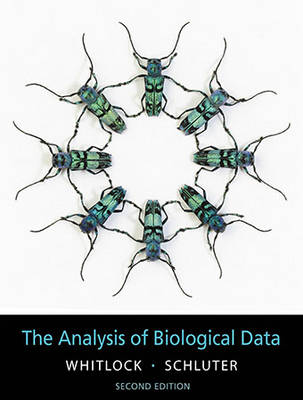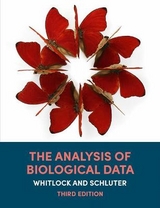
Analysis of Biological Data
Roberts & Company Publishers (Verlag)
978-1-936221-48-6 (ISBN)
- Titel ist leider vergriffen;
keine Neuauflage - Artikel merken
Michael Whitlock is an evolutionary biologist and population geneticist. He is a professor of zoology at the University of British Columbia, where he has taught statistics to biology students since 1995. Whitlock is known for his work on the spatial structure of biological populations, genetic drift, and the genetics of adaptation. He has worked with fungus beetles, rhinos, and fruit flies; mathematical theory; and statistical genetics. He is a fellow of the American Academy of Arts and Sciences and a fellow of the American Association for the Advancement of Science. He is also the former editor-in-chief of The American Naturalist. Dolph Schluter is professor and Canada Research Chair in the zoology department and Biodiversity Research Center at the University of British Columbia. He currently teaches evolutionary ecology as well as a graduate course in biological data analysis. Schluter is known for his research on adaptive radiation - the evolution of ecological diversity in groups of organisms that are multiplying rapidly - and on the evolution of major biodiversity gradients. His initial studies were carried out on Darwin's finches in the Galapagos Islands, followed by work on seed-eating birds in other parts of the world. Recently he has carried out studies of competition, adaptation, and the origin of species in threespine stickleback inhabiting lakes of coastal British Columbia, Canada, and the genetic basis of species differences. He is a fellow of the Royal Society of London and the Royal Society of Canada and is a Foreign Member of the American Academy of Arts and Sciences. He has received multiple honors including the Guggenheim Fellowship, The Sewall Wright Award from the American Society of Naturalists, the Killam Fellowship from the Canada Council, and the Darwin-Wallace Medal from the Linnean Society of London. He is a past president of the Society for the Study of Evolution and the American Society of Naturalists. His other books include The Ecology of Adaptive Radiation (2000).
PART 1. INTRODUCTION TO STATISTICS 1. Statistics and samples INTERLEAF 1 Biology and the history of statistics 2. Displaying data 3. Describing data 4. Estimating with uncertainty INTERLEAF 2 Pseudoreplication 5. Probability 6. Hypothesis testing INTERLEAF 3 Why statistical significance is not the same as biological importance PART 2. PROPORTIONS AND FREQUENCIES 7. Analyzing proportions INTERLEAF 4 Correlation does not require causation 8. Fitting probability models to frequency data INTERLEAF 5 Making a plan 9. Contingency analysis: associations between categorical variables PART 3. COMPARING NUMERICAL VALUES 10. The normal distribution INTERLEAF 6 Controls in medical studies 11. Inference for a normal population 12. Comparing two means INTERLEAF 7 Which test should I use? 13. Handling violations of assumptions 14. Designing experiments INTERLEAF 8 Data dredging 15. Comparing means of more than two groups INTERLEAF 9 Experimental and statistical mistakes PART 4. REGRESSION AND CORRELATION 16. Correlation between numerical variables INTERLEAF 10 Publication bias 17. Regression INTERLEAF 11 Using species as data points PART 5. MODERN STATISTICAL METHODS 18. Multiple explanatory variables 19. Computer-intensive methods 20. Likelihood 21. Meta-analysis: combining information from multiple studies
| Erscheint lt. Verlag | 28.7.2014 |
|---|---|
| Zusatzinfo | colour illustrations, black & white tables |
| Verlagsort | Greenwood Village |
| Sprache | englisch |
| Maße | 185 x 241 mm |
| Gewicht | 1542 g |
| Themenwelt | Mathematik / Informatik ► Mathematik |
| Naturwissenschaften ► Biologie ► Evolution | |
| ISBN-10 | 1-936221-48-9 / 1936221489 |
| ISBN-13 | 978-1-936221-48-6 / 9781936221486 |
| Zustand | Neuware |
| Informationen gemäß Produktsicherheitsverordnung (GPSR) | |
| Haben Sie eine Frage zum Produkt? |
aus dem Bereich



